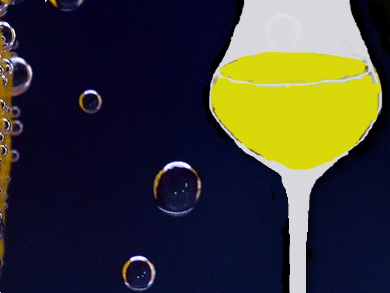Limoncello is a popular Italian liquor based on lemon essential oils and a complex colloidal system made of essential oils, ethanol, sucrose, and water. As these components determine the smell, aroma, taste, and appearance of Limoncello, the composition of various Limoncellos have been studied intensely.
Leonardo Chiappisi and Isabelle Grillo, TU Berlin, Germany, have for the first time studied the microstructure of limoncellos using small-angle neutron scattering (SANS). The team compared the microstructures of Limoncello samples with a model system containing pure citrus essential oils. They enriched the water and the alcohol with deuterium and left the hydrogen in the lemon oil unchanged to distinguish between the substances.
The team found that 100 nm-sized droplets of essential oil formed spontaneously in the continuous polar water/ethanol/sucrose phase. The droplets show little variation with temperature and overall composition and are stable over a long time range. They are in equilibrium with molecularly dissolved essential oil. At a system composition close to that of commercial Limoncellos, ca. 2/3 of the essential oil is trapped in droplets, 1/3 of the essential oil is molecularly dissolved and in equilibrium with the droplets. This free essential oil can be released as a lemon fragrance.
The researchers assume that the smell, taste, and optical appearance of Limoncello results from the equilibrium. It remains unclear what the physical forces are that lead to the formation of the oil drops. They are significantly smaller than in other well-known triple mixtures of water, alcohol, and oil. In addition, it remains unclear what mechanism is guaranteeing the long-term stability to Limoncello systems.
Essential oils, especially limonene, are experiencing quickly growing applications, for example, as green solvents in replacement of petro-based chemicals for specific applications, as specialty chemicals, or as bio-based monomer or monomer precursors for polymerization reactions. To understand these systems, with the aim of tailoring them to the desired need, detailed knowledge of the microscopic structure is necessary.
- Looking into Limoncello: The Structure of the Italian Liquor Revealed by Small-Angle Neutron Scattering,
Leonardo Chiappisi, Isabelle Grillo,
ACS Omega 2018.
https://doi.org/10.1021/acsomega.8b01858


